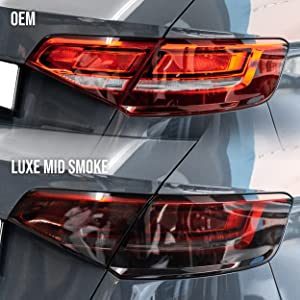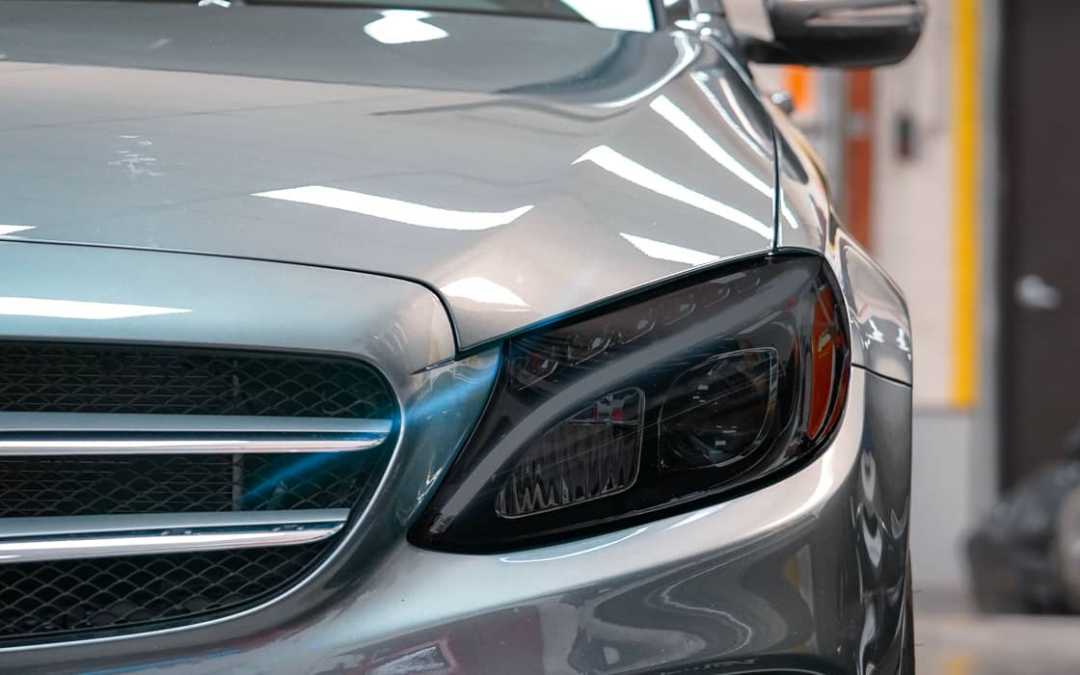What is Headlight Tint?
Introduction
Headlight tint refers to a protective film that is applied to the headlights of vehicles. This film can alter the appearance of the headlights, giving them a darker or colored look. However, it is important to note that headlight tint laws exist in many jurisdictions to ensure the safety of road users. These laws specify the maximum amount of tint that is allowed on headlights, as well as the color and type of tint that is permissible. It is essential for vehicle owners to be aware of these laws and comply with them to avoid fines or legal consequences. Headlight tint laws vary from country to country, and even within different states or regions, so it is important to check the specific regulations in your area before applying any tint to your vehicle’s headlights.

Headlight Tint Laws in New Zealand
In New Zealand, the applicable law regarding headlight tint is the Land Transport (Road User) Rule 2004. According to this rule, the headlights of a vehicle must emit a white or yellow light and must not be covered or obscured by any material that restricts the light output. This means that any tint applied to headlights must be very light and transparent, allowing the maximum amount of light to pass through. The Land Transport (Road User) Rule also stipulates that any additional lights, such as fog lights or driving lights, must comply with the same requirements as the main headlights. If a vehicle is found to have headlight tint that does not comply with the law, the owner may face fines or the vehicle may fail its WoF (Warrant of Fitness).
Tail Light Tint
Similar to headlight tint, tinting the tail lights of a vehicle is also subject to regulations to ensure visibility and safety on the road. In New Zealand, the Land Transport (Road User) Rule 2004 also applies to tail light tint. The rule specifies that the tail lights of a vehicle must emit a red light and must not be covered or obscured by any material that restricts the light output. This means that tail light tint must be very light and transparent, allowing the maximum amount of light to pass through and maintaining the red color. It is important for vehicle owners to carefully consider the legality of any tint applied to their tail lights to avoid penalties and ensure the safety of themselves and other road users.
Why do People Tint their Headlights?
People choose to tint their headlights for a variety of reasons. One of the primary reasons is the aesthetic appeal it provides. Tinted headlights can completely change the look of a vehicle, giving it a unique and customized appearance. With various tint options available, individuals can choose a shade that matches their personal style and complements the overall look of their vehicle.
Aside from the visual enhancement, headlight tinting also offers protection. The tint film acts as a barrier, shielding the lights from road debris, such as rocks and gravel, that can cause damage. This can help extend the lifespan of the headlights, saving owners from costly repairs or replacements.
Despite the appeal and benefits of headlight tinting, it is crucial to comply with legal regulations. Many jurisdictions have laws in place specifying the maximum amount of tint allowed on headlights, as well as the color and type of tint permissible. These laws are designed to ensure the safety of road users by maintaining proper visibility. It is important for vehicle owners to understand and adhere to these regulations to avoid fines or legal consequences.
In conclusion, people choose to tint their headlights for the aesthetic appeal, customization options, and protection it provides. However, it is essential to comply with legal regulations to ensure the safety of both the vehicle owner and other road users.

Potential Hazards of Dark Headlight Tints
Introduction:
While headlight tinting is legal in New Zealand, there are certain restrictions in place to ensure that motorists can safely operate their vehicles on the roads. In order to maintain visibility and avoid potential hazards, it is important for vehicle owners to be aware of the potential dangers associated with dark headlight tints. This article will explore the potential hazards that can arise from using excessively dark tints on headlights and provide valuable insights into why adherence to tint laws is crucial for road safety.
Potential Hazards of Dark Headlight Tints:
1. Reduced Light Output: Dark headlight tints can significantly reduce the amount of light emitted by the headlights. This can greatly compromise visibility, making it more difficult for drivers to see the road ahead, obstacles, or pedestrians. Reduced light output can also diminish the visibility of the vehicle to other drivers on the road.
2. Impaired Signaling: Headlights not only serve to illuminate the road, but they also play a crucial role in signaling other drivers. Dark tints can obscure the visibility of turn signals, hazard lights, or brake lights, making it difficult for other road users to anticipate the vehicle’s movements. This can increase the risk of accidents and rear-end collisions.
3. Inadequate Illumination: Dark headlight tints may create blind spots, reducing the effectiveness of the headlights in illuminating the entire road. This can make it challenging for drivers to detect pedestrians, animals, or other potential hazards, particularly during nighttime driving.
4. Non-compliance with Tint Laws: The use of excessively dark headlight tints not in accordance with the legal requirements can lead to penalties and legal consequences. Non-compliant vehicles may fail warrant of fitness inspections, requiring costly adjustments and potentially impacting insurance coverage.
If you are looking for bracelet. There’s something to suit every look, from body-hugging to structured, from cuffs to chain chain bracelet and cuffs.
In summary, dark headlight tints pose potential hazards such as reduced light output, impaired signaling, inadequate illumination, and non-compliance with tint laws. It is crucial for vehicle owners to prioritize road safety by adhering to legal requirements surrounding headlight tints and ensuring proper visibility for themselves and other road users.

Difficulty in Seeing Road Hazards at Night
When it comes to driving at night, visibility is paramount for road safety. Unfortunately, the use of dark headlight tints can pose a significant challenge in seeing road hazards. These dark tints reduce the amount of light emitted by the headlights, making it difficult for drivers to see obstacles, pedestrians, or debris on the road.
The potential dangers and risks associated with reduced visibility are concerning. Not being able to see road hazards increases the likelihood of accidents, especially when drivers are unable to react in time. This can have severe consequences for both the driver and other road users.
Pedestrians, in particular, become incredibly vulnerable when drivers have difficulty seeing them. Whether they’re crossing the road or walking alongside it, dark headlight tints can make it challenging to spot pedestrians, increasing the risk of accidents.
In addition, debris or animals on the road may go unnoticed due to the reduced visibility caused by dark headlight tints. This puts not only the driver at risk but also other motorists who may encounter the same hazards.
Maintaining proper light output is crucial for optimal road safety. It ensures that drivers have a clear view of the road ahead, allowing them to anticipate and react to potential hazards. By adhering to tint laws and avoiding excessively dark headlight tints, drivers can greatly reduce the risks associated with reduced visibility at night.

Reduced Light Output for Other Drivers on the Road
Dark headlight tints pose potential hazards on New Zealand roads, primarily due to reduced light output. These modifications to headlights can significantly impact the visibility of other drivers, increasing the risk of nighttime accidents.
Headlights play a crucial role in illuminating the road and notifying other motorists about the presence of a vehicle. Dark headlight tints diminish the intensity of the light emitted, reducing its range and making it harder for other drivers to see the tinted vehicle. This compromised visibility can lead to dangerous situations where other drivers may not be able to react in time, increasing the likelihood of accidents.
Driving at night already presents its own challenges in terms of reduced visibility. Adding dark headlight tints further exacerbates this issue, making it even more difficult for drivers to perceive road hazards. Whether it’s debris, potholes, or animals crossing the road, the reduced light output can make it challenging to spot potential dangers ahead. This not only puts the driver of the tinted vehicle at risk but also endangers other motorists who may encounter the same hazards.
In order to ensure the safety of all road users, it is essential to comply with New Zealand’s tint laws and regulations regarding headlights. By adhering to these guidelines, drivers can help maintain optimal light output from their headlights, providing clear visibility for themselves and others on the road.
Increased Risk for Night-time Accidents
Dark headlight tints pose an increased risk for night-time accidents, primarily due to the reduced visibility they create. These modifications to headlights significantly impair the light output, making it harder for both the driver and other road users to see and be seen. Adhering to legal requirements regarding headlight tints is crucial to ensure road safety.
Headlights play a critical role in illuminating the road and alerting other motorists about the presence of a vehicle. Dark headlight tints diminish the intensity of the emitted light, reducing its range and making it difficult for other drivers to see the tinted vehicle. This compromised visibility can lead to dangerous situations where other drivers may not have enough time to react, increasing the likelihood of accidents.
Driving at night already presents challenges in terms of reduced visibility. Adding dark headlight tints further impairs visibility, making it even more challenging for drivers to perceive potential hazards. Whether it’s debris, potholes, or animals crossing the road, the impaired light output can make it difficult to spot these dangers ahead. This not only puts the driver of the tinted vehicle at risk but also endangers other road users who may encounter the same hazards. The apples are ripe, and the orchard is full of joy of harvest.
To ensure road safety, it is important to comply with legal requirements regarding headlight tints. It’s crucial to prioritize the well-being of both the driver and other road users by maintaining adequate visibility on the road.
Contact the Professionals
Are you interested in tail light tinting or tinting services for your vehicle? Look no further than Studio Finish. As experts in the field, we provide top-notch tinting solutions that not only enhance the appearance of your vehicle but also offer optimal protection.
At Studio Finish, we understand the importance of complying with tint laws. Different countries and regions have specific regulations regarding the darkness of tinted lights. It is essential to adhere to these laws to ensure road safety and avoid penalties. In New Zealand, the Land Transport (Road User) Rule 2004 outlines the legal requirements for tinted lights. We highly recommend familiarizing yourself with these regulations to ensure your vehicle complies.
If you have any questions or require further information about tail light tinting or window tinting services in general, do not hesitate to contact the professionals at Studio Finish. Our knowledgeable team is ready to assist you and provide expert advice. You can reach us at 08002279727, through email at Sales@StudioFinish.co.nz, or visit our location at 34D Constellation Drive, Rosedale, Auckland, 0632.
Choose Studio Finish for high-quality tinting solutions and exceptional customer service. Contact us today to learn more about our services and how we can transform your vehicle with our professional tail light tinting options.



Recent Comments